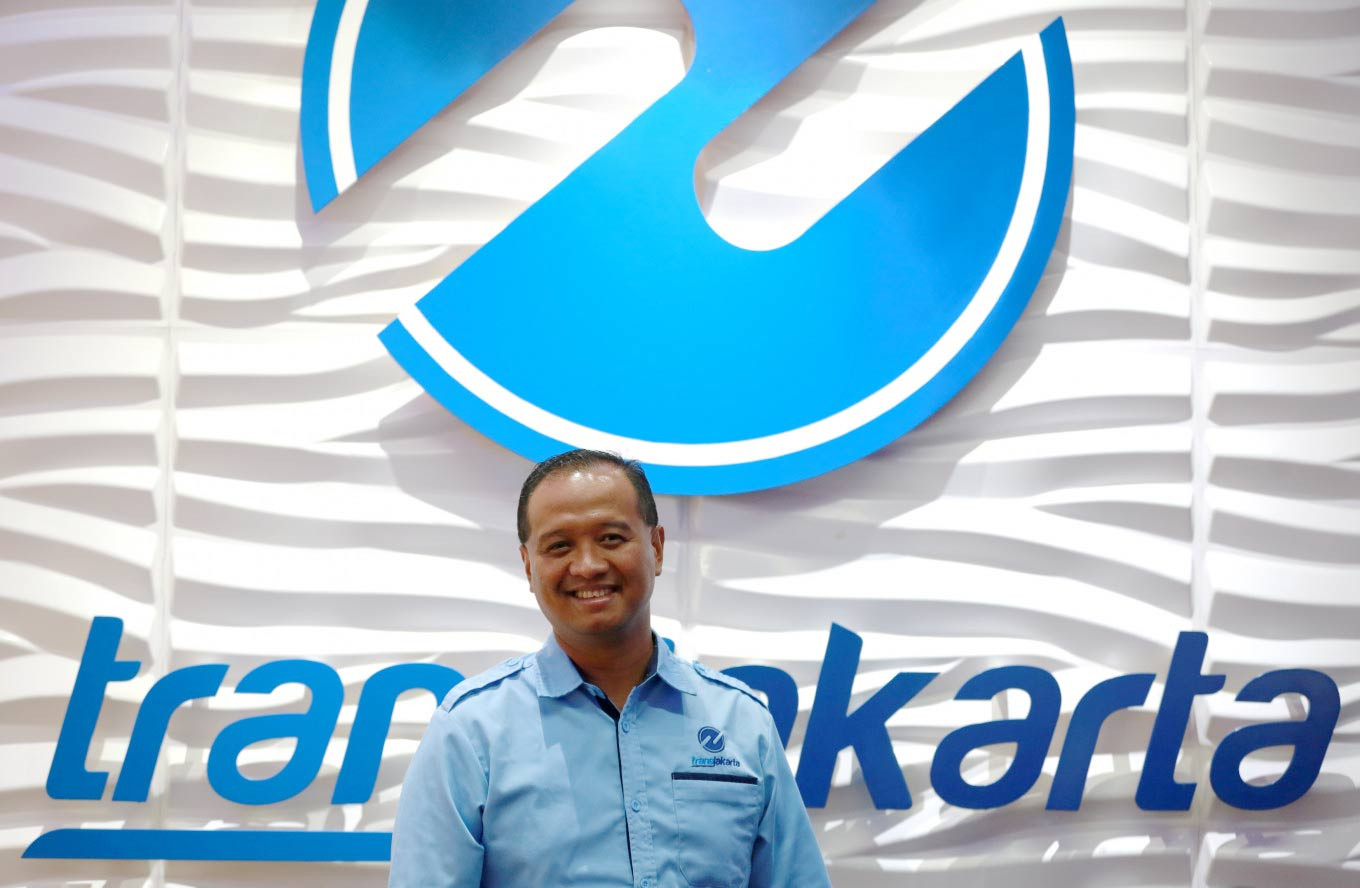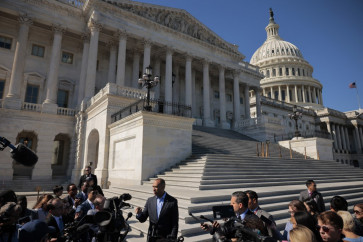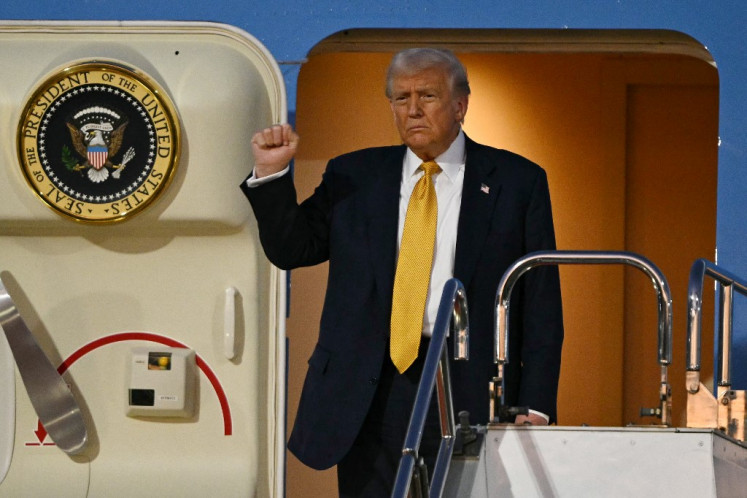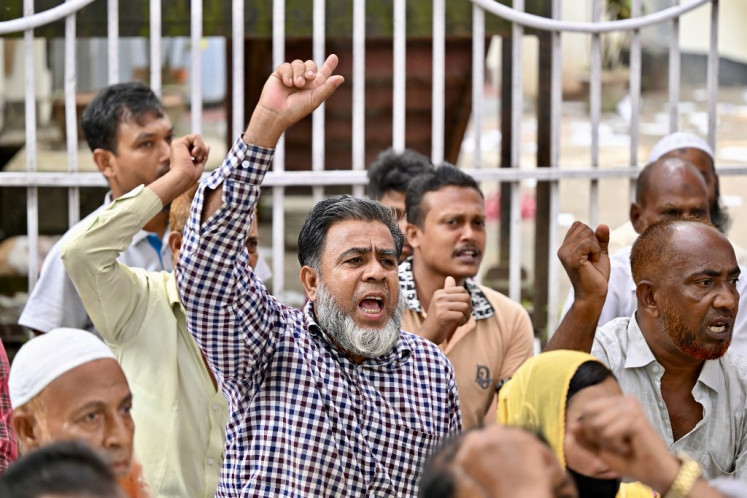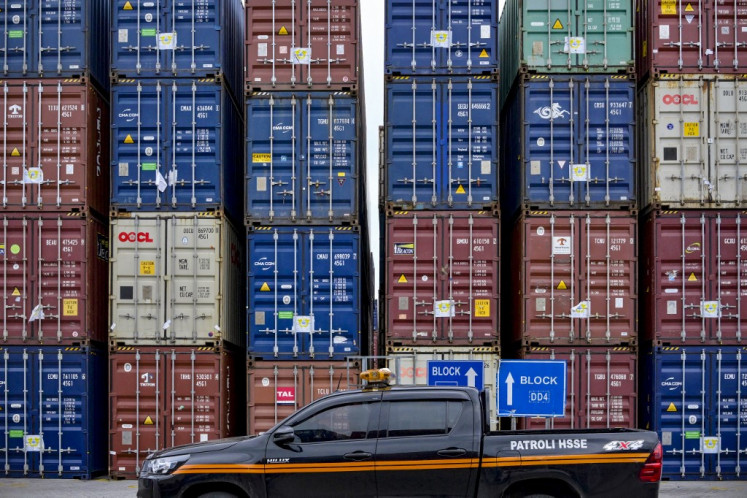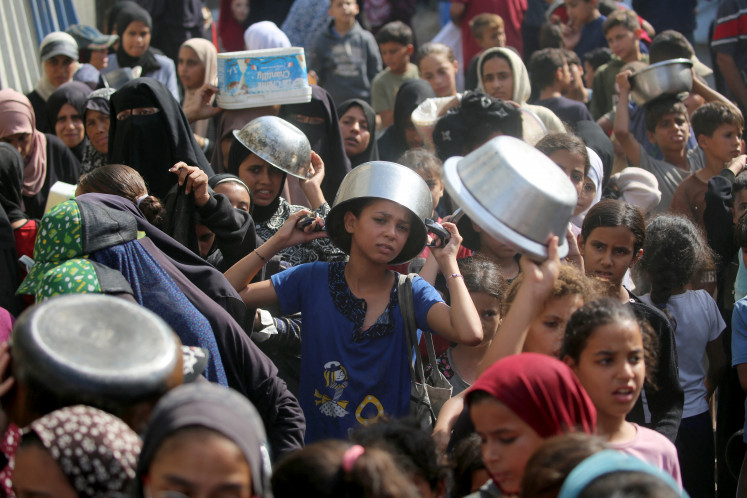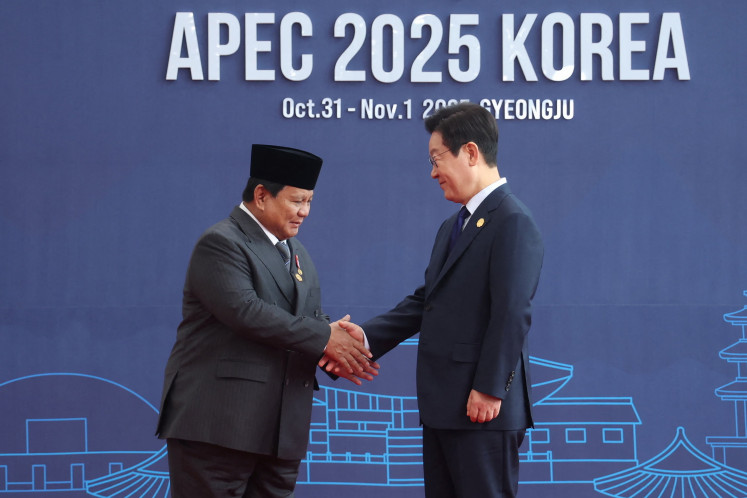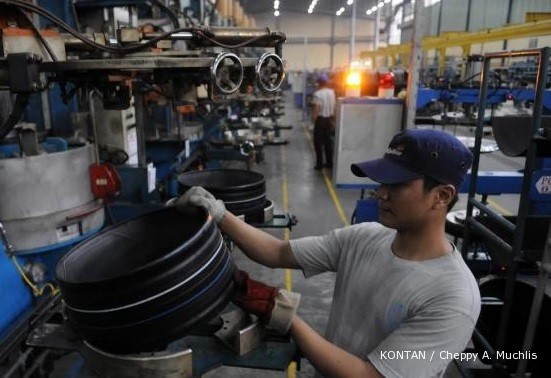Popular Reads
Top Results
Can't find what you're looking for?
View all search resultsPopular Reads
Top Results
Can't find what you're looking for?
View all search resultsTransjakarta CEO: Transportation, not competition
"Right now, the busway is still the city’s backbone, especially where there are no other options."
Change text size
Gift Premium Articles
to Anyone
T
his year marks 15 years of the Transjakarta operation in Jakarta, serving some 600,000 passengers daily along 13 corridors. Newly inaugurated PT Transportasi Jakarta (Transjakarta) president director Agung Wicaksono shared with The Jakarta Post’s Vela Andapita and Arientha Primanita his plans to improve the bus service. The following are excerpts from the interview.
Question: How have you been doing since your appointment on Oct. 29?
Answer: Public transportation in Jakarta has evolved from the era, which I call 1.0, where people’s [only] option [was to] to take angkot [public minivans] or Kopaja or Metromini buses, which were privately owned but lacked certain public transportation service standards.
Era 2.0 started in 2004, under then-Jakarta governor Sutiyoso, when Transjakarta buses hit the road. For the first time, the government provided a solution to the city’s traffic problems even though the organization was too bureaucratic, being under the Jakarta Transportation Agency.
Then era 3.0 was when Transjakarta transformed into its own company in 2014. As a corporation, Transjakarta has grown aggressively with a significant increase in the number of vehicles, routes and passengers. In 2015, we only had 300 buses. But by the end of 2018, we already had 900. The number of passengers in the past three years has also grown by 23 percent.
Now that I have joined the company, it’s the beginning of era 4.0. Transjakarta should integrate and collaborate with the MRT and the LRT [light rapid transit].
As former director of operation and maintenance in PT MRT Jakarta, how do you maintain relations with MRT to support the integration effort?
When [Jakarta Governor] Anies Baswedan appointed me as the Transjakarta president director, I was working for MRT at “full speed” mode. [After the appointment] I talked with William Sabandar [MRT president director] and some people I regard as seniors to help me think. […]Transjakarta and MRT signed an MoU [memorandum of understanding] last Nov. 23 to conduct a study. The MRT is expected to be the city’s next public transportation backbone. Hence, the study aims to find the best way to integrate Transjakarta and the MRT.
Besides physical integration like joining bus shelters and stations, what else should be done?
The most challenging part is integrating routes to ease people’s commute. It needs a comprehensive study to answer questions, such as, what are the best routes so that people can reach the MRT station in Lebak Bulus [South Jakarta]? Or what routes could Transjakarta provide on corridor 1 to optimize the MRT along Jl. Sudirman and Jl. MH Thamrin?
The other one is integrating payment. The city administration has asked Transjakarta, MRT and the LRT [through PT Jakarta Propertindo or Jakpro] to establish joint corporation that manages integrated payment among the three services. We’re waiting for the governor’s regulation to start the company. MRT will own most of the shares.
Is that part of JakLingko, the city’s one-fare public transportation system?
JakLingko is [..] the city’s flagship program that attempts to integrate road-based public transportation modes, with Transjakarta as the umbrella. As mandated by Anies, “you should not leave out players that already exist in the market [since era 1.0].”
When the MRT and LRT start operating, will the busway face its sunset?
I don’t think so. Right now, the busway is still the city’s backbone, especially where there are no other options. I, however, still need to work hard to assure people […] that the busway will not be left out [when the MRT and LRT operate]. We must have the confidence to say that the other modes will be successful because we’ve been here long before them.
The MRT’s first phase will only serve passengers from South to Central Jakarta. Construction of its second phase will kick off this year, then it’ll finish in maybe 2025. Until then, Transjakarta will still be the backbone.
How did Transjakarta perform in 2018? What are your targets this year?
We aim to serve 213 million passengers in 2019, up by 24 percent from 2018, which was 189 million. Anies told us to “make people proud of taking public transportation”, hence we should make Transjakarta available everywhere. Ideally, people should be able to find public vehicles every 500 meters. We need to add more routes to reach passengers from small streets.
How many routes will you add this year?
We have 161 routes and we’re hoping for 236 routes by the end of 2019. We’ll focus on opening routes that connect people with the MRT. If there was a route from Bumi Serpong Damai or Bintaro [South Tangerang] that connected to Lebak Bulus, it would definitely attract more passengers for the MRT.
Do you take Transjakarta to go to the Transjakarta office in Cawang, East Jakarta?
To be honest, no. It’s more about efficiency. From my house in Bintaro, I can just enter the nearest tollgate from my house and exit in Cawang. […] That’s the lesson: public transportation should make people feel it’s the most efficient option for commuting.
What’s your basic suggestion for the capital’s public transportation?
Providing a transportation service is not about competition. Don’t make people choose whether to take the bus or train. Because if that’s the case, some services will lose, some services will win. But through integration, all services will collaborate. No competition.
This article was originally published in The Jakarta Post's print edition on Jan. 15, 2019, with the title "Transjakarta CEO: Transportation, not competition".

